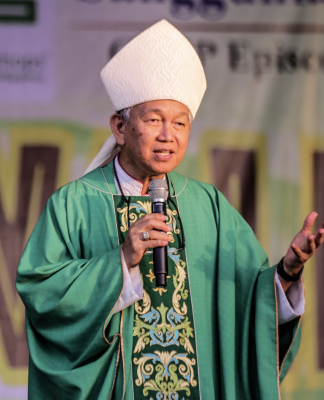 IN THE 19th century, the University of Santo Tomas began in a small compound in the walled city of Intramuros, standing by the Pasig River. Its edifice was marked by arched interiors and white-painted stone walls, while a lavish garden decorated the entrance.
IN THE 19th century, the University of Santo Tomas began in a small compound in the walled city of Intramuros, standing by the Pasig River. Its edifice was marked by arched interiors and white-painted stone walls, while a lavish garden decorated the entrance.
In celebration of the 150th birthday of Jose Rizal, The Varsitarian looks back at the school the national hero had come to know and the academic environment he grew up in.
Rich history
The University relocated to Sampaloc in 1927 to accommodate the increasing number of students, while the land where the old Intramuros campus once stood was sold by the Dominicans.
“If only Rizal lived until today and UST was still situated in Intramuros, the only thing he would recognize [in Intramuros] is Fort Santiago,” said UST archivist Regalado Trota-Jose, adding that Rizal might remember Letran but would barely recognize it.
“UST was like the Department of Education then,” Trota-Jose added. “It served as the coordinator among all schools in the country.”
In 1865, Queen Isabella II of Spain issued a decree giving the University authority to supervise all schools in the country, and giving the rector authority to approve the issuance of diplomas of other schools.
Trota-Jose noted that Rizal’s stay in UST was marked by his creativity in the field of literature.
“From year 1877 to 1882, Jose Rizal wrote probably at least four poems, and a sarzuela during his Thomasian days,” said Trota-Jose, adding that Rizal’s “To the Filipino Youth,” was also written during his stay on campus.
He stayed at the Casa Tomasino dormitory located at the Santo Tomas Street in Intramuros, which was under the care of the father of his love interest, Leonor Rivera.
An earlier version of the Museum of Arts and Sciences and the Arch of the Centuries was already present during Rizal’s time, naming the spacious lane from the Arch to the statue of Miguel de Benavides after him. Trota-Jose said that Rizal also walked through the Arch during his freshman years.
“The Arch of the Century would probably be the best memory he’s had,” Trota-Jose said.
The tradition continues today in an event known as the “Thomasian Welcome Walk.”
The National Hero also enjoyed the University Week and other feasts that were then celebrated. Trota-Jose noted that Thomasians “celebrated November 13 like how we currently celebrate January 28, observing the feast day of St. Thomas Aquinas.”
“There were musical activities and literature contests during that time, but today’s UST is definitely more joyous,” the archivist said. Margaret Rose B. Maranan with reports from MARIA Luisa A. Mamaradlo














